Audio Career Changers: How Multitasking Engineer Dan Walker Found a New Focus in Mastering
Considering a career change? Whether you’re an audio engineer or an accountant, switching gears can be big decision.
No matter how passionate someone is about audio, challenges and/or personal evolution can lead to considering a career switch. That change can be to an entirely different industry, or it can be to a new role in music and sound.
The latter path was taken by Dan Walker, a certified Audio Warrior who SonicScoop readers first met in 2017 with a visit to his Bushwick, Brooklyn studio The Submarine. Back then, Walker was going all out doing it all—producing, composing, tracking, mixing, and mastering. It was exhilarating, but also unsustainable.
Then the Australian-born Walker made a major decision in early 2020 to narrow things way down. He converted from a quintuple threat solely to mastering, and opened for business in Ridgewood, Queens.
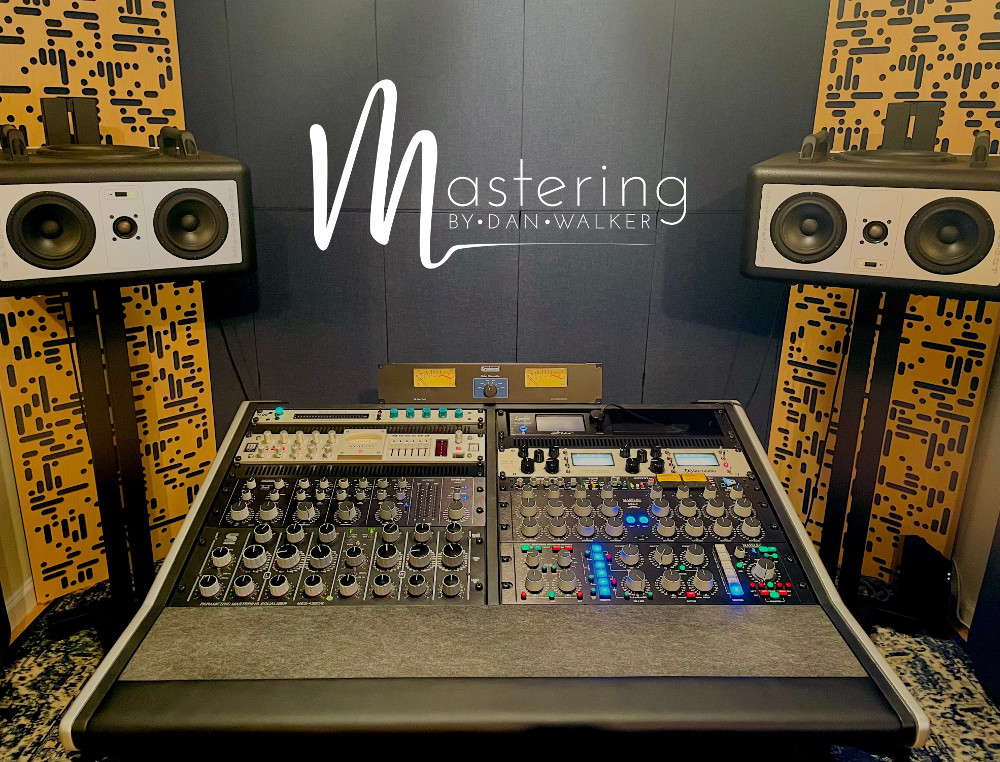
Why did musical multitasker Dan Walker shift solely to mastering? (Photo Credit: Christopher Wallace)
Walker isn’t the first mixer/producer to go mastering-only. Why would an audio pro make this significant, yet logical, career shift? He lays his decision-making bare here, the good, the bad, and the ugly that led him to take such a big professional plunge.
As a bonus, Walker explains the gear choices he made to equip his new mastering room at a world-class level. How did he curate a few select EQs, compressors, converters, monitors, and acoustical treatments for a suite that competes?
If you’re considering a career change—within audio or to a whole new vertical—read on. You’ll get insights and inspiration from this studio pro whose gone through it.
Part I: The Timeline
2010: So, initially I was working out of a loft space over at The Loom in Bushwick—that was back in 2010 after I moved to Brooklyn from Philly.
It was a very cozy 7ft x 7ft room with a bed built above the studio. I was still producing club records for labels out in the UK, and at the time I was also working on our second Death Set album with my friend and bandmate Johnny Siera. This saw some fun colabs with the band in the studio, along with Diplo and Spankrock.
I was also playing live and touring a bunch, so I found I was having quite a few artists in the scene come by the space to track vocals, while I was mixing, producing, and dabbling in mastering.
At this point I was still fairly in the dark about how to get records in the right place mastering-wise, but it was definitely there in that loft where the interest sparked.
Fast forward to 2012: Things were getting tense in The Loom due to…this and that. It felt like a good time to move the studio to a dedicated production space where I could properly focus on the artists and expand the room.
This lead me to a warehouse space on 44 Stewart Avenue, which was at the time one of three buildings under the New York Studio Factory banner. The room wasn’t much bigger than my loft but it had a vocal booth, which was cool, and it was a healthy move in just being able to separate my workspace from my living space.
I was working with local artists, primarily recording vocals, overdubs, production, mixing and a little mastering. The Submarine Studio was basically born in that new room. I had some outboard—an API 2500, a Fatso (UBK version), Avalon sp747 and a pair of Chandler TG2 pres, which I used for both tracking and re-amping.
I was still finding my way with mastering and was looking into interning at some of New York’s mainstays at the time but with no luck so I did the next best thing I could. I bought a book, read it repeatedly, and taught myself by mastering records non-stop until I started to really get it and felt confident that things were translating correctly.
Off the strength of that I put the feelers out and did my first label job for Rough Trade with The Prettiots, the album Fun’s Cool. After that I was really hooked on mastering, but I was still juggling all the other audio processes running the studio as a one-stop shop. But this is where things started to develop.
Roll up 2014: Two studios at the end of the hall in our building suddenly become available at the same time. I had my friend and business partner Rob Hinder over from Australia. Although in the back of my mind I was getting fascinated by mastering, we took this opportunity to rent both rooms and build out a proper space with both a control and live room.
This was a really cool time. I totally dug in 100% and just learned as much as I could about running a business and working with clients, wiring the studio, and knowing all the connectivity back to front.
A deeper understanding of outboard gear naturally grew as the collection expanded. Acoustically treating the rooms was a big learning curve and trying to do that as correctly as I could within my means gave me great insight into that whole process too.
I worked on some great, really fun records. Guerilla Toss, Boulevards, Princess Superstar, and some label stuff with DFA, Dim Mak, Ninja Tune, Captured. Also a range of other awesome artists stopping through such as Living Color, Blaqstarr, Billy Rymer of Dillenger Escape Plan to work on projects with outside engineers. It was a great time, and for a few years there I was completely dug in as a one-stop shop and grinding my ass off.
But the mastering bug was demanding my attention as things continued to develop. I was getting to a point around 2017 where it was becoming clear that I just wanted to master records only. Keep in mind I started my actual audio journey back in 2001 with a certificate course at SAE back in Australia. So it was 15 years or so into the process where it suddenly became very clear that mastering was what I wanted to really focus on.
Early 2017: I was trying to figure out an exit strategy from The Submarine. With mastering at the forefront of my thoughts I was on Craigslist one day—most likely looking for audio gear to buy—when I randomly put in a search for jobs as “mastering engineer”. The longest shot but strange things happen and as it turned out I stumbled across a post for a mastering room in Jersey City looking for an engineer to come onboard. It turns out it was Joe Lambert’s studio, JLM, and it was Joe who had in fact mastered two of the first Guerilla Toss records I’d done with those guys at The Submarine just after they signed to DFA, so I was familiar.
With some common ground there, I sent him an email, we chatted it up, and off the strength of that I ended up mastering records out of that room for the next three years. JLM is a really great space, precision built, and working there introduced me to some classic mastering gear like Sontec and Maselec. It ultimately allowed me the time and motivation to fill in the handful of remaining knowledge gaps on mastering records correctly in a dedicated space.
I definitely came into “just mastering” at a fairly late stage in my process but as the old saying goes, “It’s never too late.” I felt very fortunate to have had that opportunity working out there in Jersey with Joe, having access to his knowledge and studio.
It was definitely at this point that mastering became my sole focus, even though I was still occasionally juggling some mix work to keep the wolves from the door.
2020 rolls around: I’d made a decision to make a move out on my own after putting in some work at JLM. I was considering a new space separate from my apartment, but the stress of balancing two rents again was weighing heavily on the decision of what to do.
In the end I decided to build out a mastering space in the spare room of our apartment. The room I had available was a challenge, but I knew with the help of GIK Acoustics who worked with me closely throughout the process treating the space, and my years already familiar working with the Barefoot MicroMain27s I could get things to translate.
There was another steep learning curve throughout that timeframe getting the room, the gear, my ears, and my mind to settle into a comfortable and positive place, but ultimately the battle was won.
Obviously 2020 saw Covid wreak havoc. I literally opened the (online) doors to this new space just as the pandemic started taking off, so the timing in that respect was brutal. It was tough trying to reach out and “discuss business” when there was so much struggle in the community, and the music industry as a whole. It was a delicate year of networking for the most part. Records came through, however it was pretty staggered.
But now, slowly, things are beginning to open up again. Artists and bands are breaking out of this forced holding pattern and word of mouth is starting to take effect, and things are picking up. It’s been a challenging time but I feel optimistic and just excited to be only mastering records now these days.
Part II: The Gear
After working at JLM I’d had the experience of utilizing some classic pieces of gear. There was a Sontec MES 431C out there which I fell in love with, and I also became acquainted with the Maselec Transfer Consoles. Initially I was working on the two-unit MTC2. Then the studio upgraded to the MTC-1X, which has all the monitor routing integrated now into a single 3-unit box.
As I was developing my own room I actually bought and sold off quite a few different bits and pieces in the process of figuring what gelled, until I got things exactly where I wanted workflow-wise. But Joe’s room definitely shaped what I was going for.
Currently the studio is fitted out as follows. Please note that the pics in this article illustrate the last gear format before the MPL-2 and Solaris went in, and the Buzz came out.
EQs
SONTEC MES 432C/9: Honestly, I was not looking for a Sontec just simply due to the insane price tag of these vintage machines secondhand, among other things, so I’d resigned myself to the fact that it wasn’t going to happen after relying on it for so long at JLM.
Later on downstream, though, one pops up and I made some moves and bought it! It’s definitely the centerpiece EQ. Super accurate, fast, doesn’t smear transients, if anything accentuates them with an addictive intensity and what it does to the bottom end and low mids, very powerful.
It’s super musical, and it just has “that” sound that’s made its way onto so many revered and classic records over decades past. This version here is the MES 432C/9 which has 3 bands on switched pots in half db steps up to 3db, and then changes to full 1db steps up to 9db. High and low shelves in there too. It’s a beast.
MASELEC MEA-2: This is generally a supporting EQ. Maselec is super-pristine gear. The action on this is a little slower/softer then the Sontec. I use it more for cutting in the low end/mids which it excels at. But for boosting it’s insane on the highs, super smooth and velvety.
I’ll use this once I set up the foundation of the EQ work with the Sontec to fill in the gaps if needed.
COMPRESSORS
API 2500: When I sold off all my tracking/mixing hardware from The Submarine to fund the mastering room, two pieces of gear stayed and seamlessly made the switch. The API 2500 was one of those pieces, the Avalon 747 being the other.
I love mastering indie/rock stuff. The API 2500 is perfect for those genres but does equally well with hip hop and club records. Really powerful in binding the low end/low mids and there’s a bunch of options in changing the compressor’s behavior in the tone control, which makes it super flexible.
I recently just swapped out the op-amps in this guy to Scott Leiber’s Red Dots. I found this subtly opened up the sound and affected the dynamism of the compressor action in a really pleasant way, particularly in handling and translating the low end info with more clarity.
AVALON SP747: This compressor is a tried and tested classic that’s been around forever. I find it a really powerful tool with the added side-chain threshold controls. You can zero in on a problem frequency and tame it in a very unobtrusive way.
It’s not as an aggressive sound as the API, so it has a slower overall action in that respect. But on the right material it’s a really beautiful and flexible piece of gear with some tubes on the input path too you can switch in or out.
MASELEC MLA-3: This beast is a tri- (multi) band compressor with a linked function that turns it into a stereo broadband compressor.
There’s a lot going on in this box. It’s insanely flexible and I find if anything I use it sparingly as a rescue tool if there’s something wild going on in the mix that needs more serious attention. Although I’ll also just use this as a dedicated stereo compressor when it makes sense for the music. It’s a very pleasant, smooth sound that doesn’t get in the way.
MASELEC MPL-2: This is a high frequency limiter. Perfect for taming unruly high mid/high end infom, and getting vinyl masters in the right place for cutting when it comes to that higher frequency range. This smoothing effect it has, it’s a beautiful thing. I haven’t found anything comparable.
CONVERTORS
So initially I started out with a Lynx Hilo. A super capable and flexible convertor system in it’s own right. It was handling everything. The D/A into the analog loop. Then catching on it’s A/D on the way out, routing into Wavelab and then also monitoring back out through it’s monitor path.
But ultimately as I started fine tuning how I was hearing things in the room, I started looking into some other convertors to create a unique pitch-and-catch system. This has led to a Cranesong Solaris now on the pitching D/A, and a Dangerous Convert AD+ catching on the way back out of the loop to Wavelab.
I still have the Hilo here and I’m using it’s D/A for the monitoring path and if anything it plays it’s part as the main connectivity hub. But I have to say adding the Solaris and Dangerous as an additional combo puts everything in a very special place.
MONITORS
The centerpiece in the analog loop is the Maselec Transfer Console (MTC-1X). This handles the input gain to the analog gear and the main output gain to the Dangerous AD+ before it hits Wavelab. In between all that there’s a wide array of functionality including the six main insert points, M/S and parallel control on selected inserts (which can also flip positions in the chain), elliptical filter, and width control.
This box also houses all the monitor routing and has a DAW return input that’s fed by the Hilo’s monitoring output. All this ends up at a pair of Barefoot MM27’s. These beasts are powered so there’s no separate amps. They really are beautiful speakers and as I’ve worked on them now for so many years I’m familiar and confident setting up masters on them. The integrated subs are great and allow me to get a clear enough view on what’s happening in the low end part of the game.
SOFTWARE
I’m using a traditional pitch and catch system so two computers. One sending the pre-master to the analog loop and another computer to catch the processed master. I’m pitching from Logic X and I’m catching in Wavelab 10.
The only plugins I use for limiting and occasionally soft clipping are the DMG Limitless or the iZotope Ozone Maximizer. Depending on the piece of music, I’ll bounce between the two and use whichever one is reacting best. And occasionally I’ll use the Weiss De-Esser if there’s some real nasty high end info that needs more accurate attention before it hits the limiter.
ACOUSTICS
GIK were super helpful in this respect and mapped out the best course of action for the space I had available. I basically built a false wall at the front of the room with custom range limited soffit bass traps. A total of six CT Alpha corner bass traps. Four Poly Fusors to scatter the Barefoots sub firing info. Six wall-mounted 244 Bass Traps (four on the walls and two acting as clouds) and finally three narrow Alpha Bass Traps for scattering around the back of the room.
MICELLANEOUS
Overall it’s been a crazy process, but I’ve now managed to put all of the pieces of the puzzle in the right place and the results are greatly satisfying!
The main struggle was getting the speakers and the desk in the right place. It was a drawn-out exercise in nudging each piece an inch this way an inch that way, forward back etc. Initially I had the Barefoots in a vertical position and I just couldn’t find a comfortable place where I had full view of the bass and low mids. It was there, but a bit smeary, veiled.
Then by accident after I was demoing some other speakers I reattached the Barefoots in a horizontal format so the subs were firing up and down instead of side to side and that did the trick. Everything tightened up and the definition in the low end came into view.
It was a ton of trial and error on all fronts, but ultimately this journey has been incredibly fulfilling. I feel very grateful and excited to have this new room to work out of.
The Big Takeaway
For me, the process of that final line of defense to catch those last stray nuances, and that feeling when the record hits that point and you know it’s done, is satisfying.
Although I worked in production and mixing for years and loved it, there’s way more moving parts. The possibility of tumbling down rabbit holes sucked the enjoyment out of it over time. I really love mastering in the sense of once it’s mastered, there’s nowhere else to go, it’s done. I enjoy that feeling of finalization.
And I’m a nerd at heart. So that mastering gear—those big switched recallable dials—feels like I’m setting up the navi-computer before making the jump to hyper space in the Millennium Falcon…Sold.
— David Weiss is an Editor for SonicScoop.com, and has been covering pro audio developments for over 20 years. He is also the co-author of the music industry’s leading textbook on synch licensing, “Music Supervision, 2nd Edition: The Complete Guide to Selecting Music for Movies, TV, Games & New Media.” Email: david@sonicscoop.com
Please note: When you buy products through links on this page, we may earn an affiliate commission.








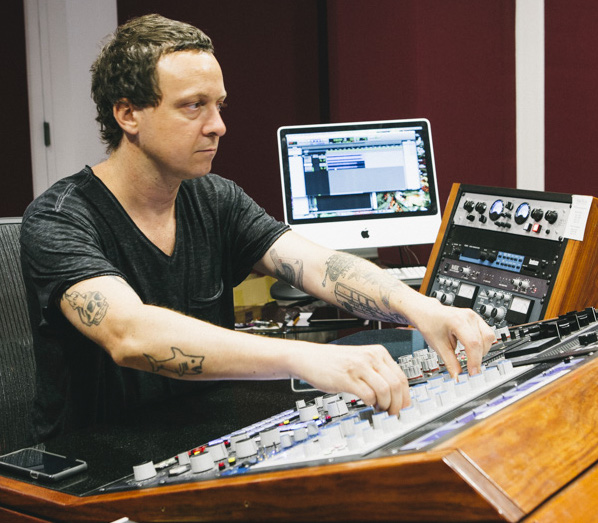
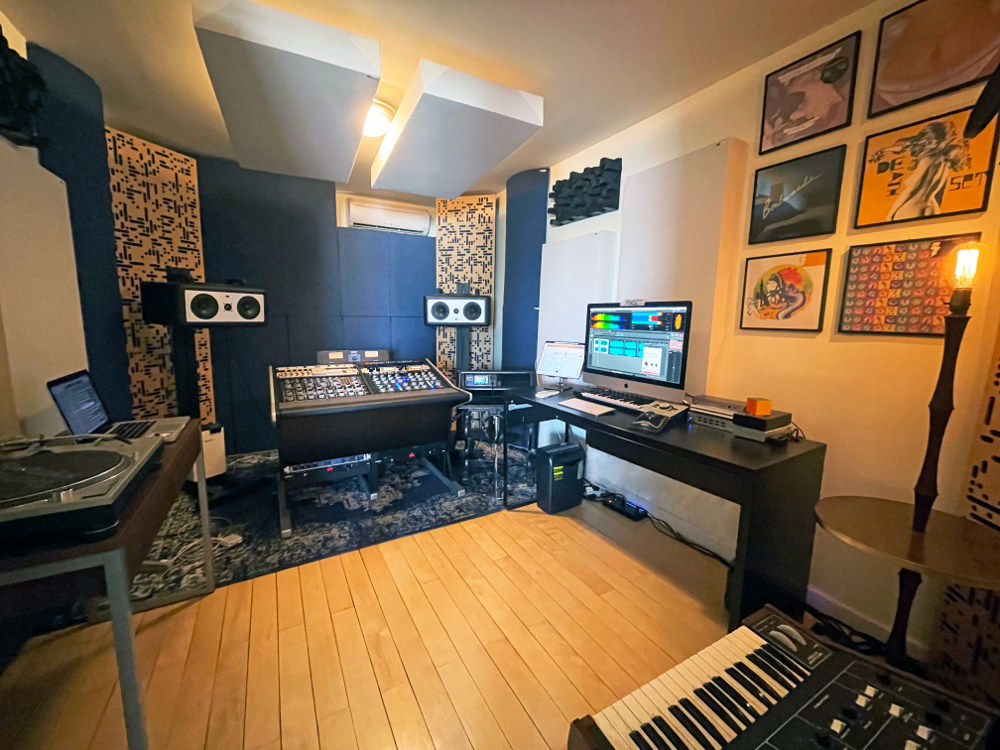
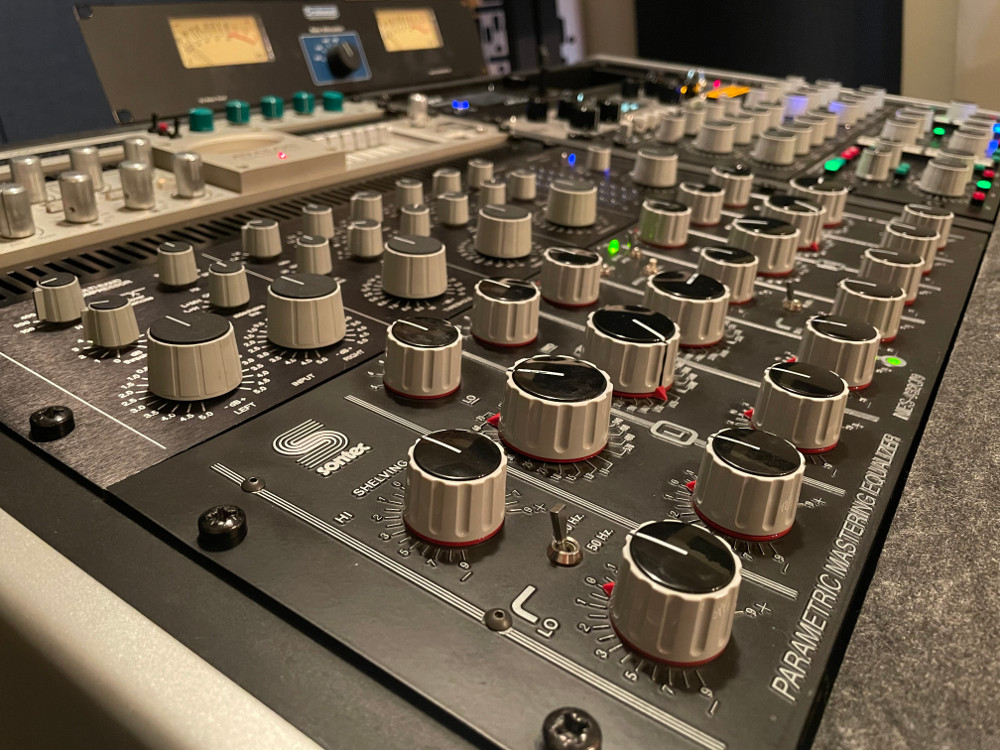
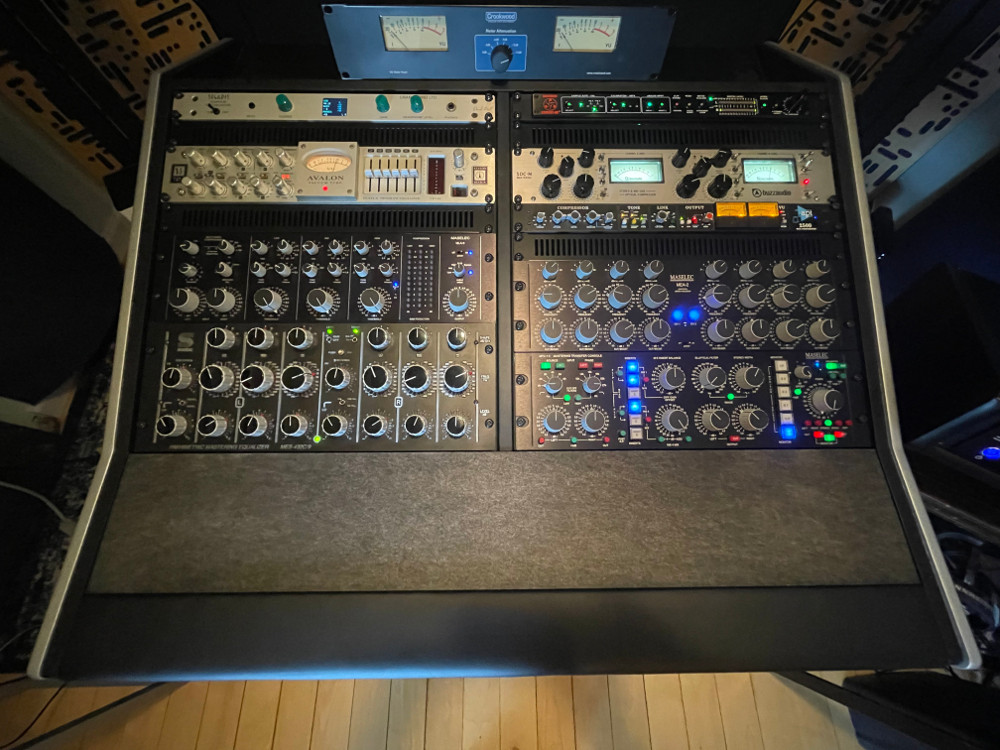
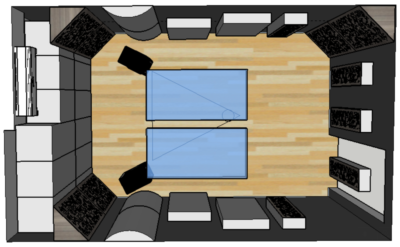

[…] No matter how passionate someone is about audio, challenges and/or personal evolution can lead to considering a career switch. That change can be to an entirely different industry, or it can be Read more… […]